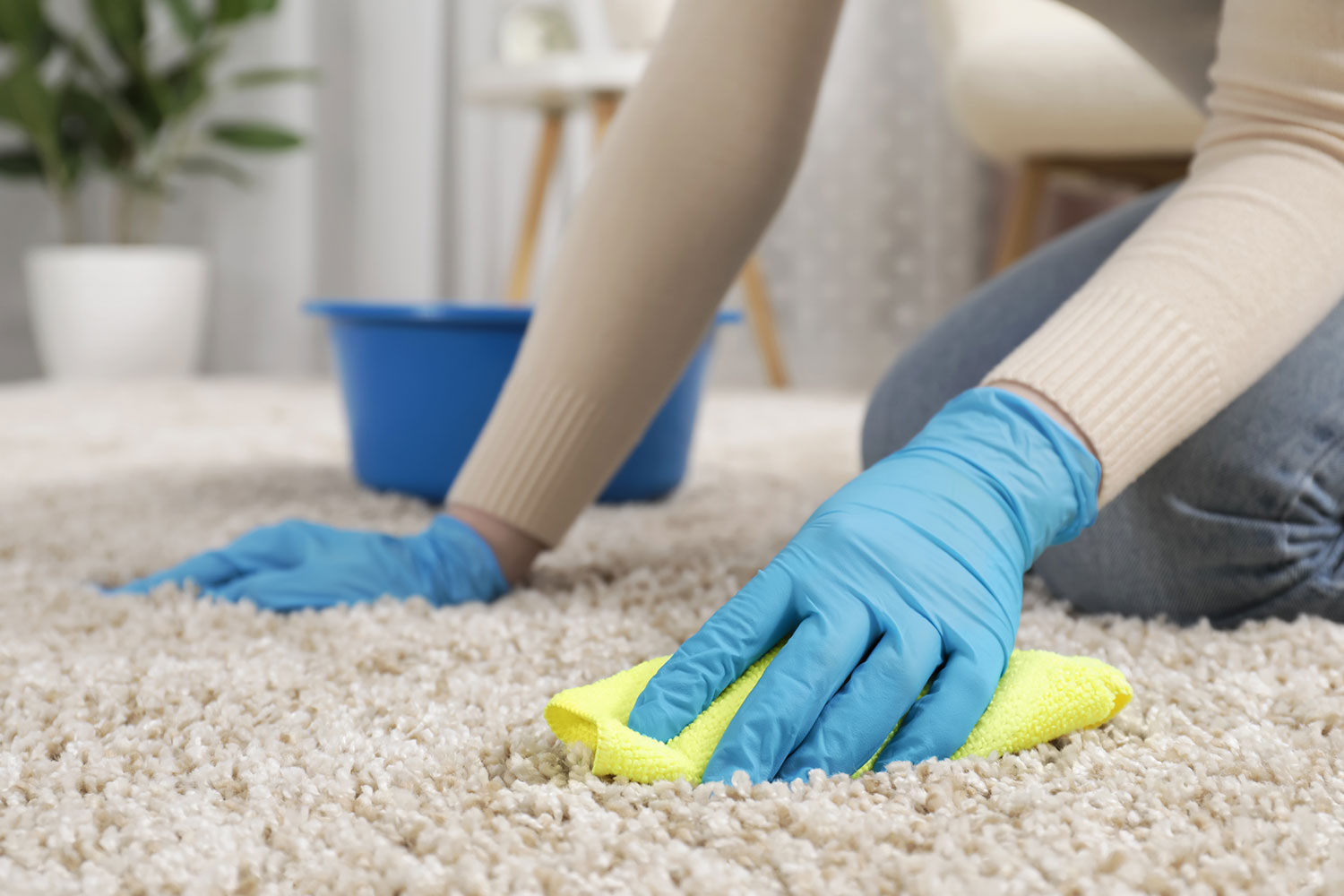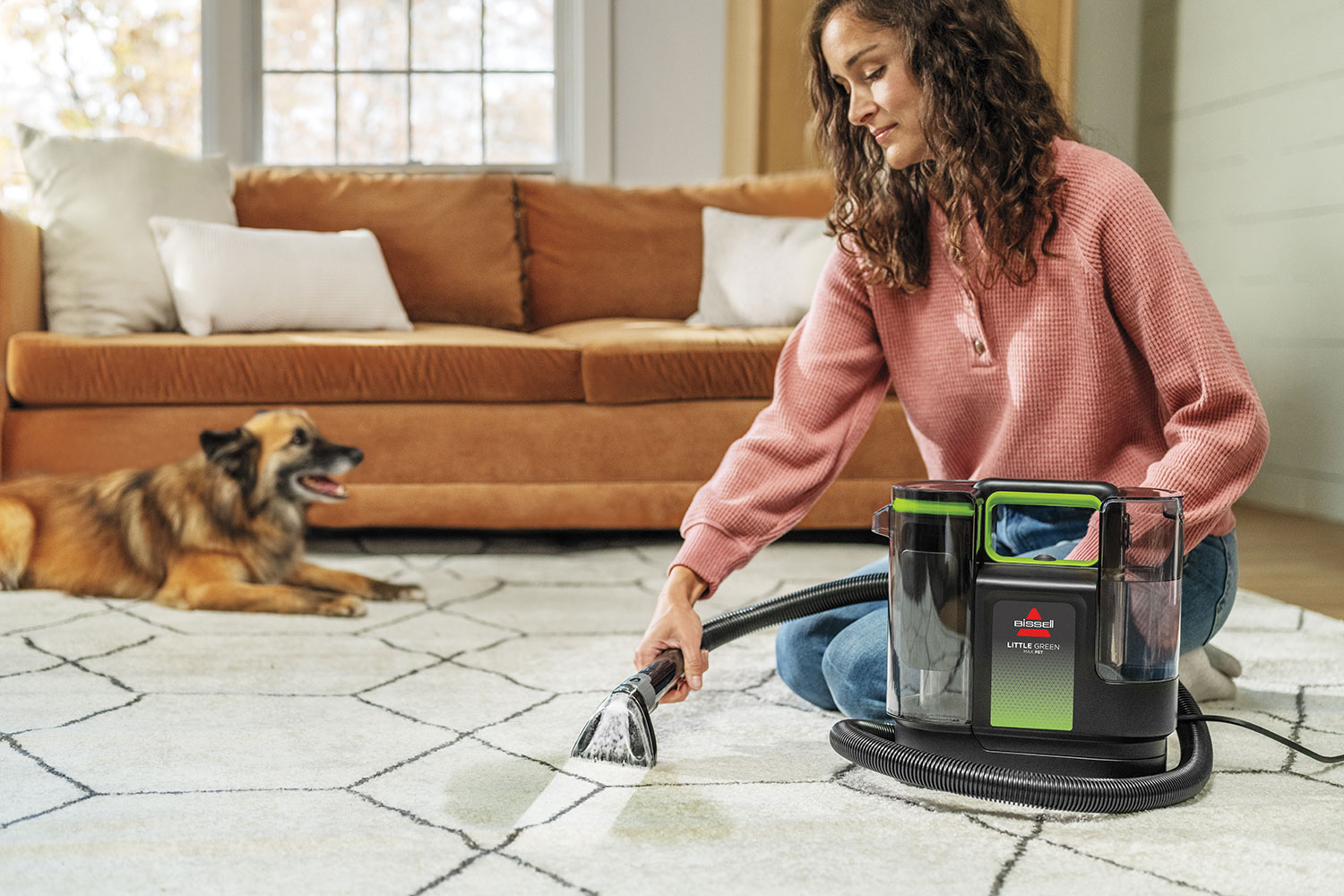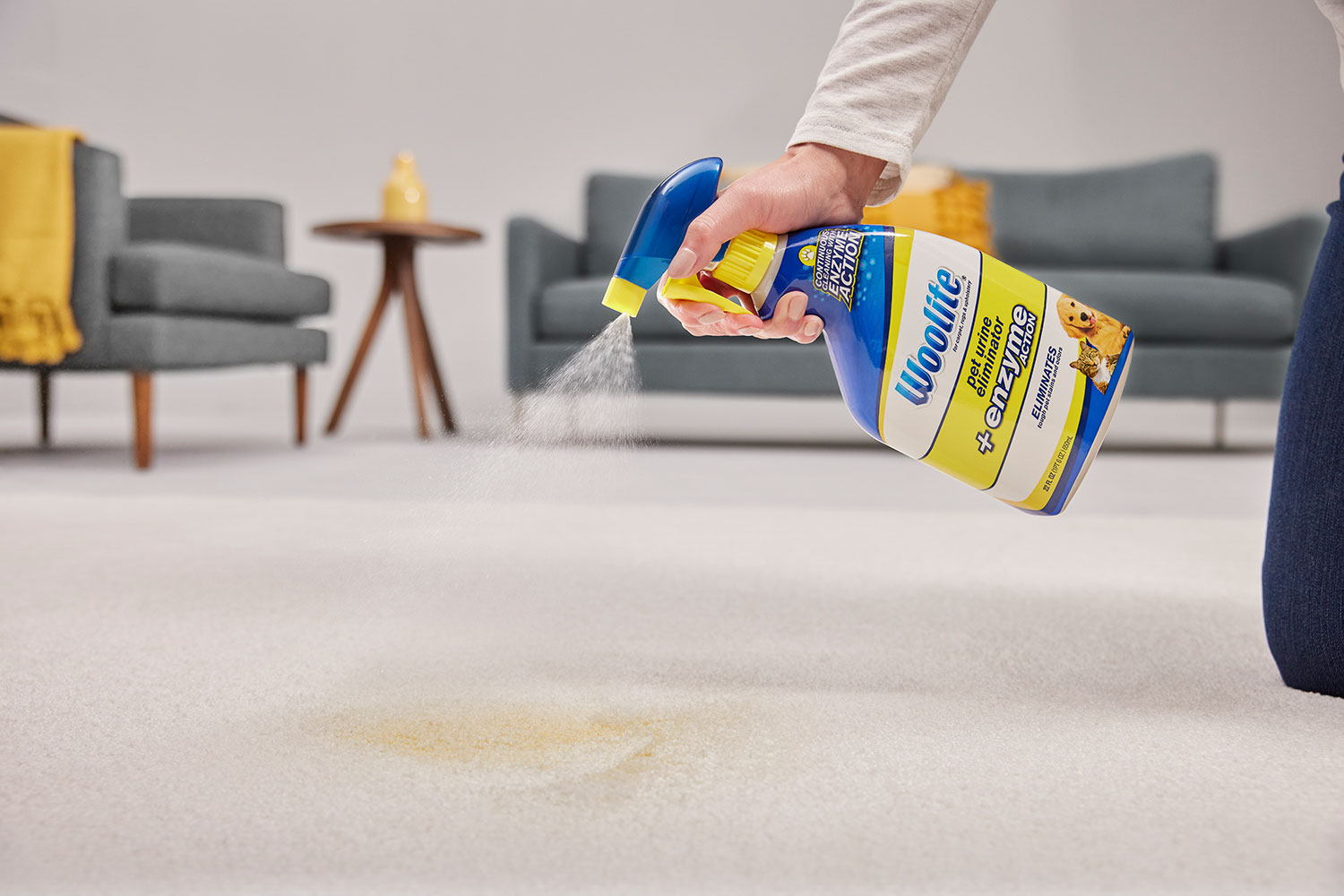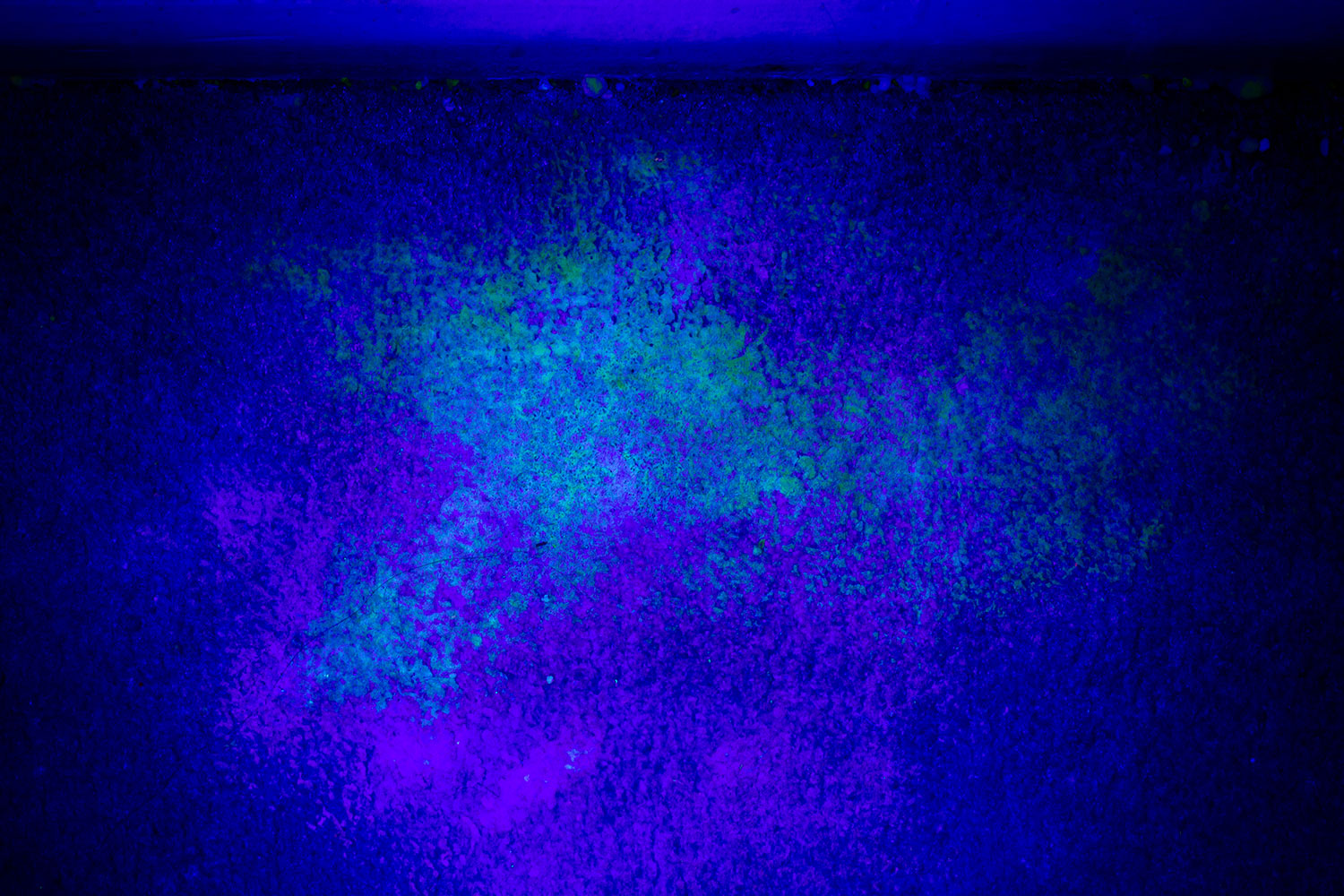How to Remove Dog and Cat Urine Smell from Carpet

Pet parents are quick to list the benefits of sharing space with a cat or dog, including companionship and unconditional love. But one potential cohabitation challenge is the lingering odour and stain of pet urine on carpet.
Whether you’re dealing with a recent accident or an older pet mess, this cleaning guide can help you permanently remove dog and cat urine from carpet.
In this guide, our experts walk you through:
- the right steps to fully eliminate pet urine stains and smells
- best practices for immediate cleanup to prevent stains from setting in
- tips for using a portable carpet cleaner for thorough stain and odour removal
- other cleaning options, including using store-bought enzymatic cleaners designed for pet urine and homemade solutions some DIY-ers believe may neutralize odours

Immediate steps to take after an accident
Blotting vs. scrubbing: What's more effective?
- When your pet has an accident on carpet, blotting the liquid away is far more effective than scrubbing. By gently pressing the stain with an absorbent material such as paper towel or a clean, absorbent rag, you will lift the liquid away, preventing it from sinking further into the carpet layers, where odours and stains become even harder to remove.
- Scrubbing should be avoided. Doing so can spread the urine, making for a bigger mess to clean up. It can also force the urine deeper into the carpet backing, embedding odour-causing compounds. Scrubbing can also damage carpet fibers, making a stained area more noticeable.
- After blotting, you can move on to actually cleaning the carpet. The most effective methods include using a carpet cleaning machine or an enzymatic cleaner, which can further help break down any remaining particles without the risk of pushing the stain further into the carpet.
BISSELL® solutions, including carpet cleaning machines developed by engineers and specialty cleaning solutions created by chemists, have been tested on actual pet urine to ensure they are up to the challenge of fully removing new and old pet messes and accidents. They can be used to clean carpets with “W” or “W/S” on their cleaning tags/manufacturer’s instructions.
Use a carpet cleaner for the deepest clean
Materials needed
- Upright Carpet Cleaner, such as the ProHeat 2X® Revolution® Pet Pro Carpet Cleaner
- Upright Carpet Cleaner Formula Designed to Eliminate Urine Odours - we like PET PRO OXY Urine Eliminator Formula for upright carpet cleaners
OR
- Portable Carpet Cleaner, such as the Little Green® Max Pet Portable Carpet Cleaner
- Portable Carpet Cleaner Formula Designed to Eliminate Urine Odours - we like PET PRO OXY Spot & Stain for portable carpet cleaners
Step 1: Fill carpet cleaner with cleaning solution
Fill your upright or portable carpet cleaner with a cleaning solution specifically formulated to tackle pet urine odors. Pet Pro Oxy Urine Eliminator + StainProtect™ Technology for upright deep cleaners or Pet Pro OXY Spot & Stain for portable deep cleaners are strong choices specifically designed to target urine stains and odours.

Step 2: Spot clean the affected area
You can blot the area first or move straight to cleaning with your carpet cleaner. Focus on cleaning the urine-stained area and the two inches surrounding the area because urine stains can spread underneath the carpet’s surface. Make one pass forward with the sprayer on and one pass backward with the sprayer off. Repeat this step two or three times.
Step 3: Extract excess moisture
Use the cleaner’s suction function to extract as much moisture as possible from the carpet, ensuring you thoroughly remove the stain and any excess cleaning solution. (The area won’t be completely dry.)
Step 4: Repeat if necessary
If any staining or odours persist, repeat the cleaning process. Stubborn spots may require multiple cleanings to remove odours and stains.
Step 5: Allow to dry overnight
Once the area has been cleaned, allow the carpet to air dry overnight. To speed up drying time, you may want to open windows or run fans to circulate air in the area.
Use an enzymatic cleaner for quick and thorough stain and odour removal
Materials Needed
- Enzymatic cleaner, such as Woolite® Carpet Pet Urine Eliminator
- Paper towels
- Vacuum cleaner, like the Pet Proven™ certified SurfaceSense™ Lift-Off® Vacuum
Step 1: Blot the area
Use paper towels or a clean rag to blot the urine spot, pressing down firmly to absorb as much liquid as possible. Avoid scrubbing, which can spread the stain further into the carpet fibers.
Step 2: Test in a hidden spot
Before applying any cleaner, test it on an inconspicuous area of the carpet to ensure it won’t damage or discolour the fabric, especially if your carpet is not colourfast.

Step 3: Apply enzymatic cleaner
After confirming the cleaner is safe for your carpet, generously apply an enzymatic cleaner like Woolite® Carpet Pet Urine Eliminator over the affected area. This type of solution is designed by chemists to break down the organic compounds in pet urine and neutralize odours.
Step 4: Let it sit
Allow the enzymatic cleaner to sit for 15 minutes on lightly soiled areas. For heavily soiled areas, apply the formula and cover it with a damp cloth for 12 to 24 hours. This gives the enzymes time to fully break down odour-causing particles.
Step 5: Repeat as necessary
If the stain or odour is still there, reapply the cleaner and repeat the process. You may have to do multiple applications on deep-set stains.
Step 6: Blot excess and allow to air dry
Once you’ve gotten the stain out, blot any remaining moisture using paper towels or a rag and allow the carpet to air dry completely. After it’s dry, go over the area with your vacuum cleaner to restore the carpet’s texture.
DIY solutions for eliminating pee smell
While specially designed carpet cleaning machines and formulas have been thoroughly tested in the lab, DIY solutions come with no guarantees. What one person says works may not deliver results for you, and there’s a chance you could damage your carpet. To help you clean wisely, we’ve gathered examples of some common homemade cleaning solutions and asked our chemists to weigh in on why they wouldn’t recommend using them to clean up urine.
DIY cleaner: vinegar
Cleaning carpet with vinegar
Multiple online sources suggest the following: combine one cup of distilled white vinegar with one cup of water in a spray bottle. Test on a small area first to make sure it isn’t affecting the colour of your carpet. Spray the solution generously over the affected area, allowing it to sit for a few minutes to neutralize the odour. Afterward, blot the area again with a clean rag or paper towel to remove any excess solution.
A chemist weighs in:
“Vinegar doesn’t lift oils and stains, and it doesn't sanitize the way a cleaning formula designed to sanitize can,” says Jay Kellis, Principal Chemist at BISSELL®. What’s more: pouring vinegar into a BISSELL® machine can cause permanent damage, corroding the inside of the machine, and leave a smell you’ll never get rid of.
DIY cleaner: hydrogen peroxide
Cleaning carpet with hydrogen peroxide
Multiple online sources suggest the following: test the hydrogen peroxide on a small, inconspicuous area first because it can sometimes bleach or discolour fabrics or fibers. If your carpet is colourfast, spray or pour hydrogen peroxide onto the stained area, covering it completely. Allow the solution to sit for several minutes, then blot the area with paper towels or a rag to absorb the cleaner and any loosened particles. Rinse the area lightly with clean water, then blot the area again with clean paper towels or a dry rag until it is mostly dry.
A chemist weighs in:
“Hydrogen peroxide alone will not do an adequate job,” says Kellis, our Principal Chemist. “Our peroxide-containing formulas also contain cleaning boosters and wetting agents, which allow the hydrogen peroxide to penetrate soils in a way peroxide alone would not. Also, our formulas are pH adjusted to offer the best stability and cleaning efficacy.”
Cleaning old urine spots
Sometimes you can smell a urine stain, but you can’t actually see it. For example, maybe you just moved into a new apartment, or you suspect your cat soiled a corner of your bedroom – but you’re not sure which one. Here’s a simple way to find – and treat – urine spots that have been sitting for a while.

Locating the dried urine spot
Use a blacklight to find urine stains. With all of the other lights out, urine stains will glow when lit by a blacklight, thanks to their chemical composition.
Removing the dried urine spot
To lift the odour, you’ll want to try a store-bought solution with tested ingredients. We recommend using a portable carpet cleaner with pet odour-removing ingredients such as OXY or enzymatic spray formula, both of which can get rid of odours that go deep into the backing of the carpet. (See cleaning instructions earlier in the article.)
Conclusion: maintaining fresh and clean carpet
Final thoughts on odour management
Use preventive products: Products designed specifically to remove pet odours or maintain carpet freshness can be helpful. For instance, some BISSELL® carpet cleaning formulas are designed to prevent pets from remarking the same area twice. While some online sources suggest an odour-absorbing product like baking soda can be sprinkled over carpet to remove odours, urine odours cannot be diminished this way.
Regularly clean pet areas: If you have pets, regularly cleaning their bedding, toys, and favorite resting spots can reduce the general spread of odours throughout the home. Establishing designated pet zones can also help contain messes and odours to specific areas.
Address persistent odours promptly: If unpleasant odours persist despite cleaning efforts, it may indicate a deeper problem, like mold or underlying carpet padding issues. In such cases, consult a professional cleaner to evaluate the carpet for possible replacement or additional treatment.
Maintain good ventilation: Ensuring proper airflow in rooms with carpet can prevent odours. Open windows when possible and consider using air purifiers to help reduce airborne particles that can settle into carpet and cause smells.
Routine cleaning best practices
Regular vacuuming: One of the best ways to keep carpet fresh is through routine vacuuming. Aim to vacuum high-traffic areas at least twice a week – less frequently used areas can wait for a weekly clean. This simple step removes dirt and dust allergens before they settle into carpet fibers, helping to prevent odour buildup.
Immediate spot treatment: Address spills and pet accidents as soon as they happen to avoid stains and lingering odours. Blotting rather than scrubbing helps lift the mess without spreading it. For pet messes, you’ll want to use cleaners that neutralize odours, ease debris removal, and sanitize your space.
Scheduled deep cleaning: Thoroughly clean your carpet every six months. Deep cleaning with a formula and carpet cleaner removes deeply embedded dirt, dust mite matter, and other gross and unseen debris which can cause unpleasant smells. It also helps extend the life of your carpet.
FAQs
BISSELL® Principal Chemist, Jay Kellis, and Senior Chemist, Jim Pell, answer key questions about pet urine in carpets, including how long you can expect that smell to last if you don’t do anything.